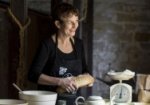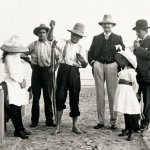Cake seems synonymous with parties and celebration – for birthdays, weddings, in fact, quite a pleasure and a treat. We have fairy cakes, angel cakes, red velvet… but what about funeral cakes?
Grieving the death of her father, Frances Cox in June 1831, Sarah Wentworth of Vaucluse wrote to advise her aunt of his passing:
“I have sent a Newspaper with my poor Father’s death in and some of his funeral cakes.”
ML Doc 822, 26 June 1831, Vaucluse.
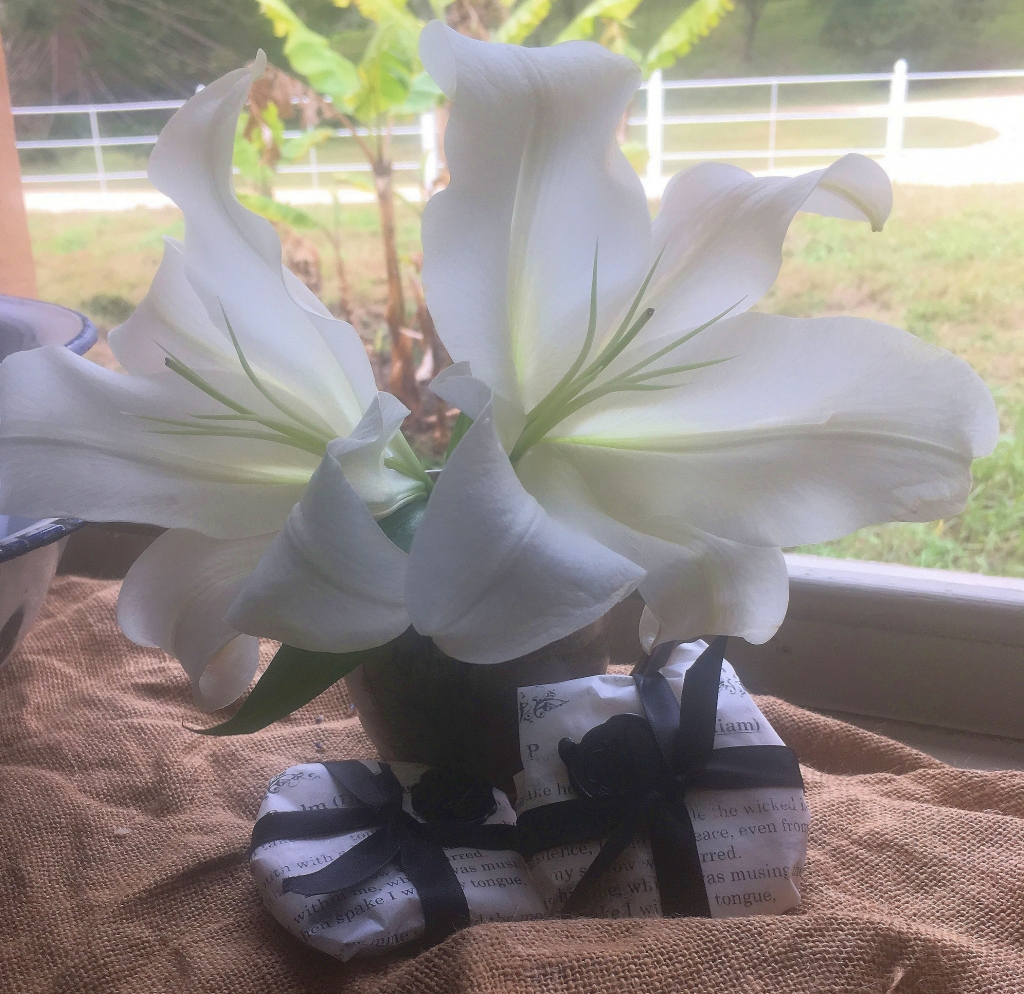
Funeral cakes wrapped at Vaucluse House. Photo © Alison Leeson for Sydney Living Museums
Commemorative cakes
Local confectioners advertised ‘Bride, Christening and Funeral Cakes, made to order on the shortest notice’ a necessary requirement in many cases of death. Just as pieces of wedding cake are shared with guests or saved for special friends and relatives, commemorative cakes were distributed at or following funerals. It is unclear what form these cakes took, or what type of cakes were made. Typically a ‘bride’ or wedding cake was a rich fruit cake, possibly finished with marzipan icing, and due to their known keeping quality.
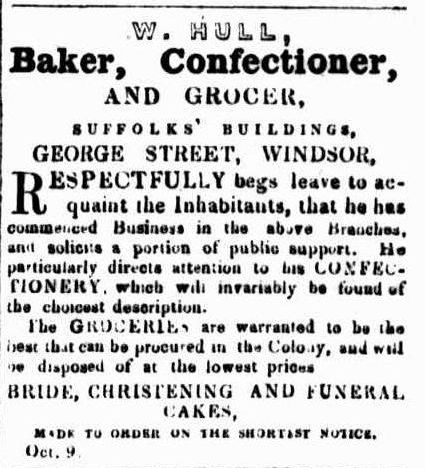
Advertisement in the Hawkesbury Courier, 7 November 1844 p. 3 accessed via TROVE, National Library of Australia,
Cakes and biscuits
The term ‘cakes’ was also used at this time for smaller biscuit-like confections, such as shortbread or caraway cakes, and from the wording in Sarah’s letter we can deduce that her father’s funeral cakes were multiple entity. In some cases a mark or motif might be pressed into the cake before baking, using specially designed wooden block moulds.
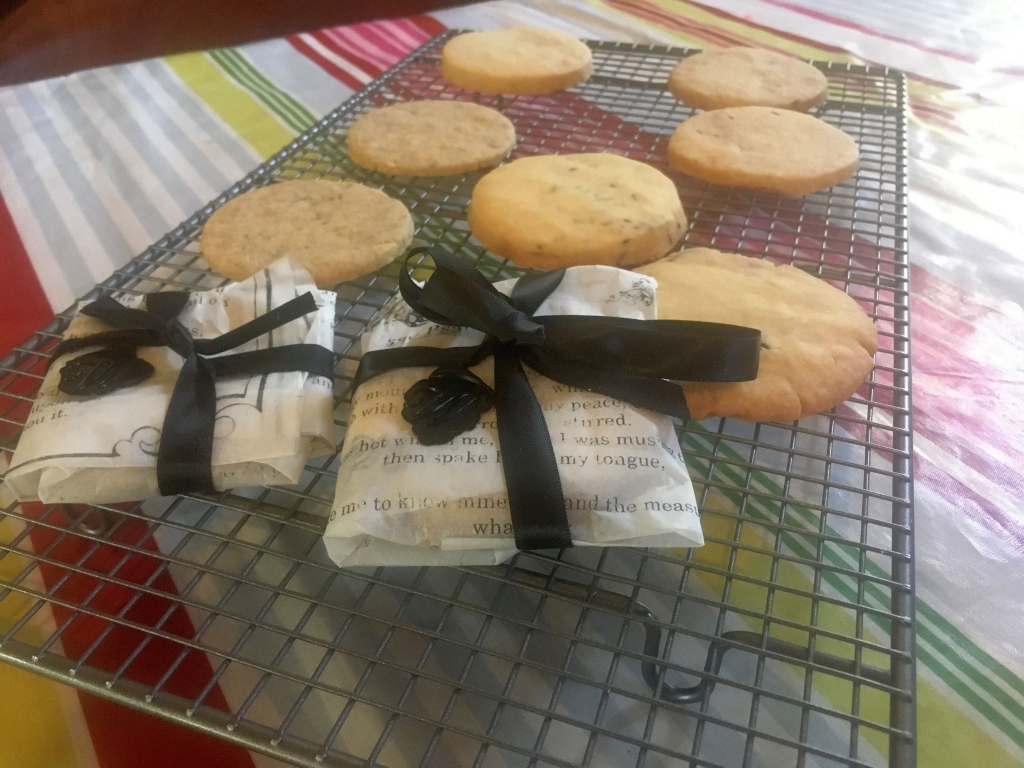
Funeral cakes freshly made and wrapped at Vaucluse House. Photo © Alison Leeson for Sydney Living Museums
A house in mourning
With ‘Life and Death’ being the theme for History Week in New South Wales this year, the team at Vaucluse House went into official mourning, Victorian style. The house was dressed in mourning garb for a special candlelight tour, which included a rare opportunity to access the Wentworth family mausoleum where William Charles Wentworth and other family members are interred. Visitors then returned to the Vaucluse House kitchen to enjoy funeral cakes that they had made themselves at the beginning of the program. We are yet to find a colonial recipe for funeral cakes, so opted for a shortbread style ‘cake’ spiced with caraway and cardomom (recipe below).
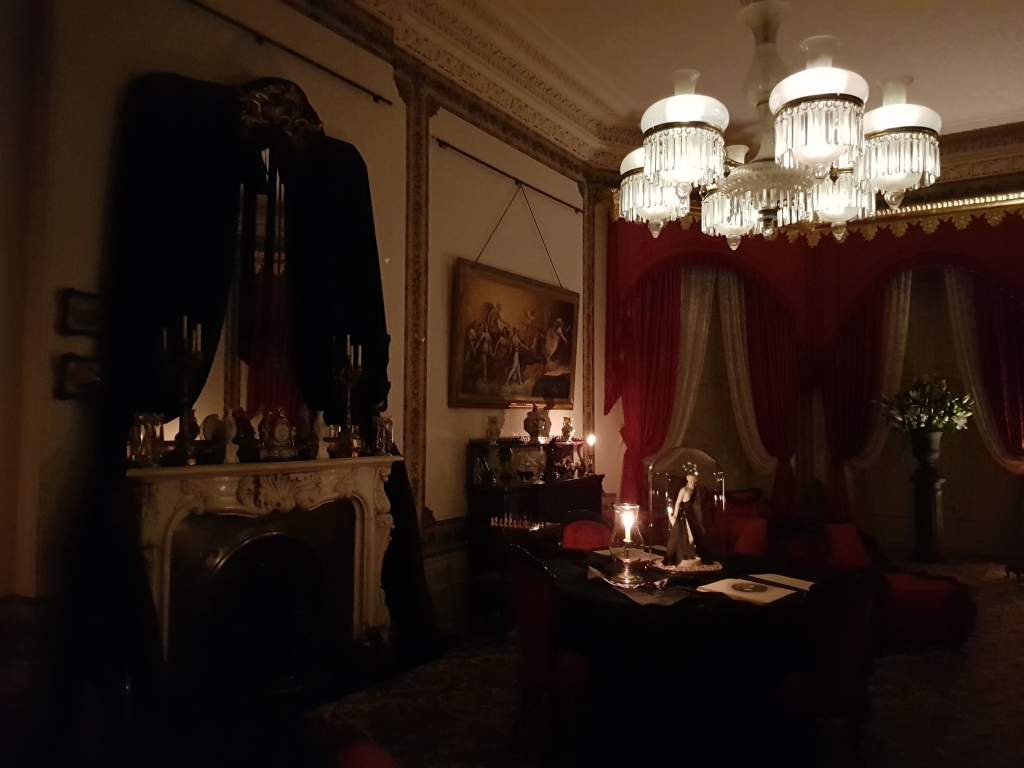
The drawing room at Vaucluse House dressed for mourning. Photo © Harriett Donnelly for Sydney Living Museums
Vaucluse House funeral biscuits
Ingredients
- 250g butter (at room temperature)
- 120g caster sugar
- 4 teaspoons caraway seeds
- 3 teaspoons ground cardamom
- 280g flour
- 80g rice flour
- pinch salt
Note
This recipe was devised for a Gothic themed Vintage Sunday at Vaucluse House. Nineteenth-century funeral biscuits were sweet, spiced confections offered by the bereaved to those who came to view the corpse, attend the burial service and/or offer condolences. This was a genteel echo of earlier, earthier rituals such as employing sin-eaters (to absolve the sins of the departed), eating corpse cakes (to absorb their virtues), and sharing 'arvel' bread beside the coffin (to honour the heir).
It was fashionable, and a sign of status, to order your funeral biscuits from a specialist supplier rather than making them at home. Grand households like that at Wentworth Woodhouse in Yorkshire, the seat of William Charles Wentworth’s kinsman Earl Fitzwilliam, dispensed delicate sponge fingers the size of finger buns. Commoners and colonials tended to prefer small shortbread rounds embossed with graveyard symbols. Either way, the recipe always included richly aromatic spices whose fragrance – like the heavily scented flowers that filled houses of mourning and were draped over coffins – helped to offset the less welcome aromas emanating from the deceased.
This recipe is based on a classic shortbread mix of one part sugar, two parts butter and three parts flour. The rice flour adds nuttiness and a sandy texture. As a finishing touch, wrap each biscuit individually. The Victorians typically used a death notice, a Bible verse or a maudlin poem.
Directions
| Cream the butter and sugar until pale and fluffy. Add the cardamom and caraway seeds. | |
| In a separate bowl, sift together the flour, rice flour and salt. | |
| Mix the dry ingredients into the creamed butter and sugar until the dough forms into a ball. If it does not bind, add a little iced water (no more than 2 teaspoons). Cover the dough in plastic wrap and refrigerate for 20 minutes. | |
| Preheat the oven to 150° C. Line a baking sheet with non-stick baking paper. On a floured surface, gently roll out the dough until it is 1cm thick. Cut out 6cm rounds with a pre-floured scone cutter, and space them well apart on the baking sheet. Impress a cross shape into the top of each biscuit. | |
| Bake for 20 minutes, or until the biscuits have just begun to turn golden. Allow to cool completely. Once cold, wrap each biscuit individually with paper. | |
| Cook's tips: Buy whole cardamom pods and grind them as required. The less you handle and work the dough, the lighter your biscuits will be. Use a food processor for steps 2 and 4. | |
| Recipe and research content by Susan Bee © Sydney Living Museums | |

 Print recipe
Print recipe